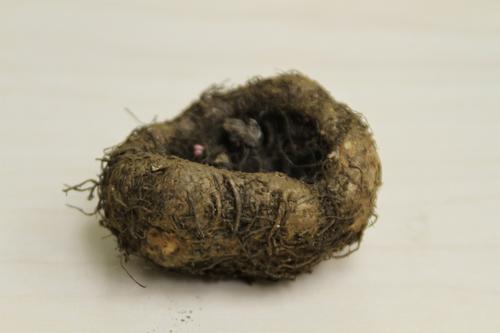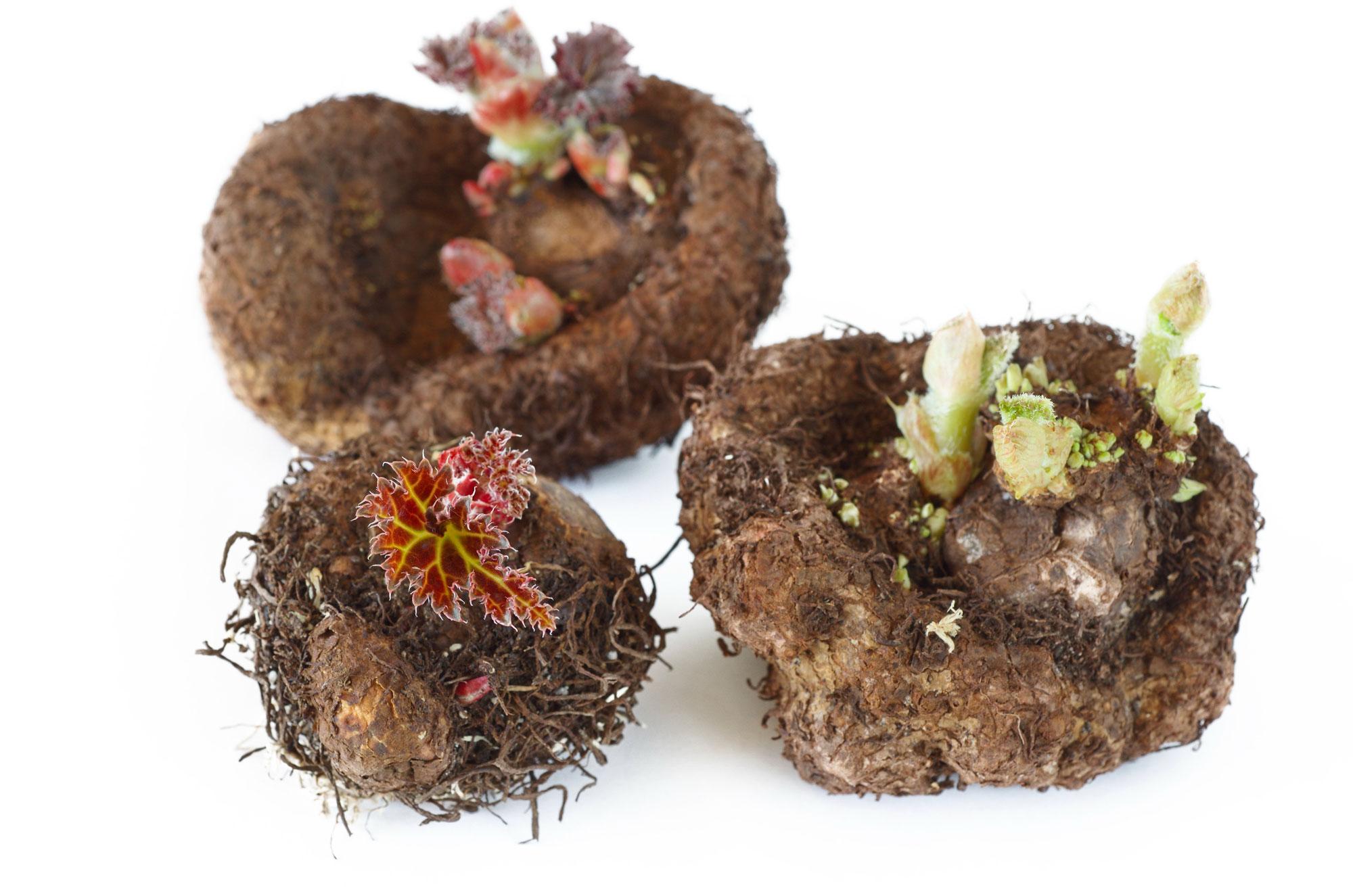Learning to Know Your Way Around a Begonia Tuber
A single begonia tuber can produce an astonishing number of flowers. The key to getting a big plant with tons of blooms is getting an early start. It usually takes about 3 months for the tubers to wake up, leaf out and begin flowering.
As with other types of bulbs, a begonia tuber is filled with stored food energy that the young plant will use to fuel its growth.
If you cut a begonia tuber bulb in half, you’ll see it resembles another, more familiar type of tuber -- a potato (but begonia tubers are not edible!). Begonia tubers are brown and hairy on the outside, rather than smooth. But like potatoes, they are covered with growth points or “eyes”.

Begonia tubers have two sides: one is dished (concave) and the other is domed (convex). The domed side of the tuber should rest on the soil surface, so it sits like a bowl. As the tuber begins to grow, fine root hairs will begin to emerge on both the outside and inside of the bowl.

Most of the tuber's eyes are located inside the cupped area where they are protected from harm. When these eyes sprout, they will grow up toward the light and develop into the plant’s stems, leaves and flowers. To learn more about growing begonia tubers, you may want to read: How to Start Tuberous Begonias Indoors.


